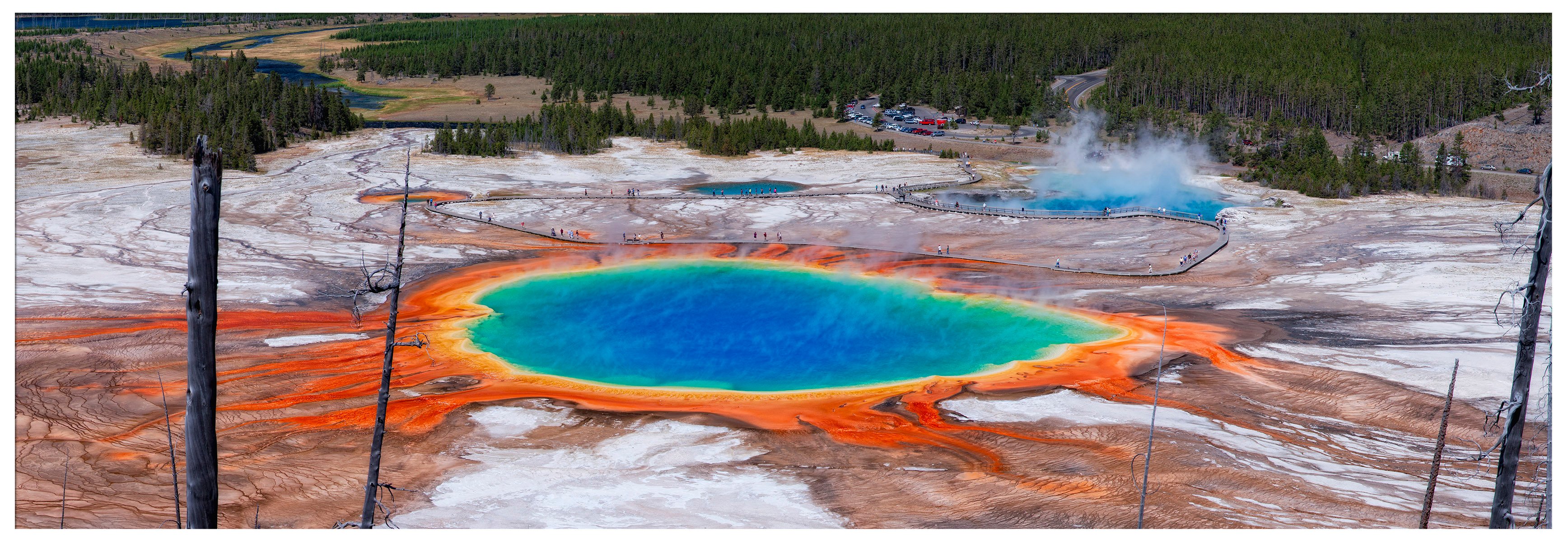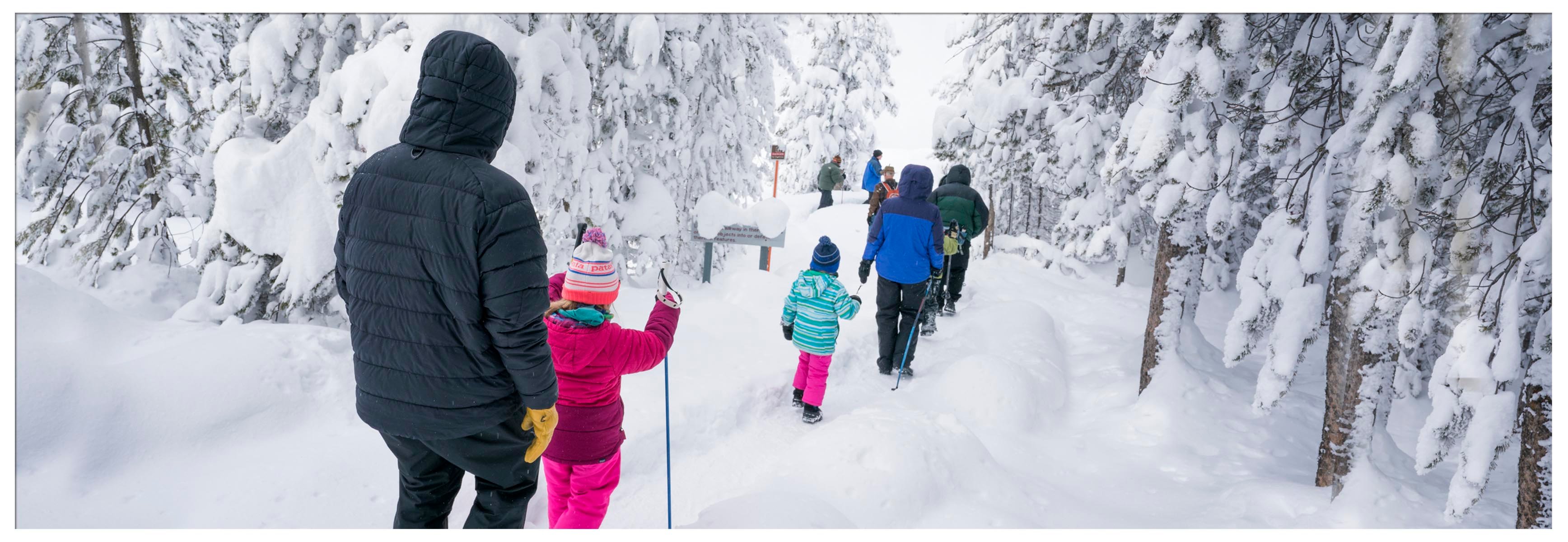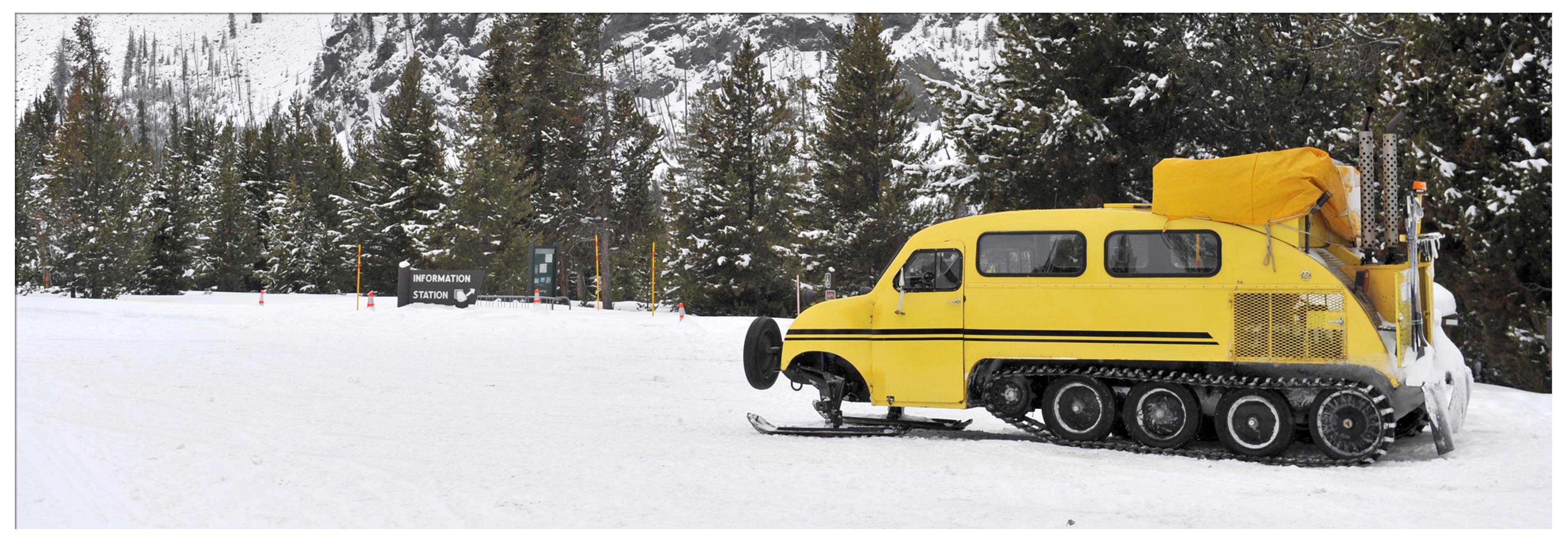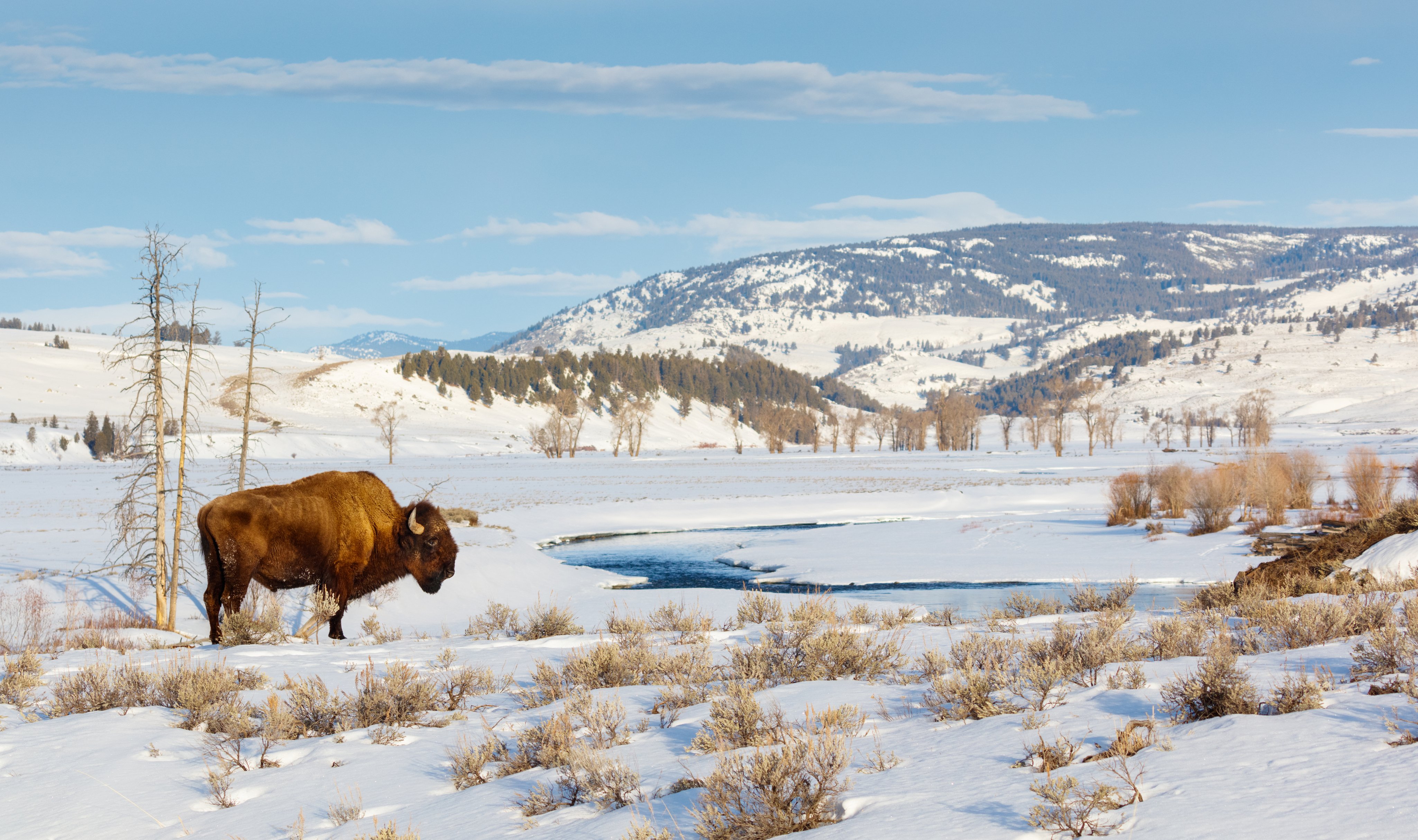Hiking in Yellowstone: Winter Edition

Hiking in Yellowstone takes a snowy turn during winter, and we couldn't be happier about it. There's something special about walking through a snowy forest, feeling at peace and perfectly calm in nature. Your winter hikes may involve snowshoes or ice cleats, depending on the conditions, but no matter the season, hiking in Yellowstone still comes with plenty of beautiful spaces, the opportunity for wildlife viewing, and a hefty dose of mountain air. Here's your guide to what to expect and how to prepare for winter hikes in Yellowstone National Park.

Conditions
When winter comes knocking, it's best to be prepared for anything. From snow to sleet, hail to vivid sunlight, you never really know what to expect. That's why you should always check the weather before you head out, and maybe even stop in at a visitor center or ranger station, just to double-check with the pros before you venture into the wilderness. But the payoff is worth the preparation, paying out in snowy mountain panoramas and the forested serenity that is winter in Yellowstone.

Gear
Thinking through your equipment goes hand-in-hand with scoping out the conditions. There's a saying around here that there's no such thing as a bad day in the backcountry—only bad gear. It's best to invest in good quality, and make sure you always have extra layers and come prepared with dry socks and waterproof tops and bottoms. Even when you know the forecast, conditions can change unexpectedly, so you want to be able to adapt to them. Gloves, hats, socks, and boots are a must-have to keep you snug and warm. Just remember that you don't want to overheat, either! Sweating in cold weather isn't a good idea since sweat is so good at cooling you off.
Keep in mind that a winter hike could require snowshoes or ice cleats like Yaktrax. There's no need to feel intimidated by the gear—it's still just walking, after all! You can grab your own from outfitters in Bozeman, Livingston or Gardiner, or find rentals in many of the same spots.

Trails
Winter hiking is at the mercy of the weather and the discretion of park staff. As you're planning your winter hikes, keep in mind that most park roads are closed to normal vehicles from October or November to April or May, meaning many areas are accessible only by snowcoach, snowmobile, skis, or on foot.
Routes can change significantly with snowpack and traffic, so be sure to check travel restrictions and trail closures in advance. Just remember that if you're on a shared trail with cross-country skiers, take care to avoid walking over ski tracks. Putting boot holes in the track can be dangerous for skiers. And don't forget to smile, wave, and have fun! This is the perfect way to spot wildlife out and about, too.

Guided options
You don't have to be as seasoned backwoodsman to enjoy traversing this expansive winter wilderness. Professional outfitters can help bridge the gap between your level of know-how and your lust for adventure. You can find private guided trips or join with a group to meet more like-minded people who love exploring the outdoors too. Organizations like Yellowstone Forever help support the park, contribute to conservation efforts, and offer fantastic trips like overnight excursions and naturalist-guided treks. Plus, there are plenty more tour companies you can connect with, so you can find the perfect fit for you.
In our never-ending quest to keep up with all things new in Bozeman, we have been producing content for years and can't possibly update every blog when new businesses open or existing businesses close. Please reference the publish date and do your own due diligence when making plans.


